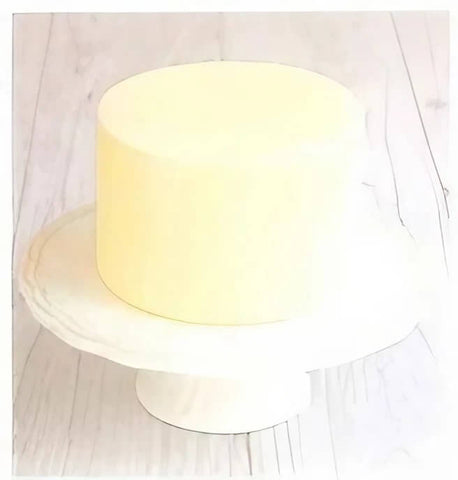How to Smooth Cream on Your Cake?
Share
Before you adorn your cake with decorative elements, you must know how to spread your buttercream smoothly and evenly over the cake. First, apply a thin layer of buttercream to the cake's surface, then smooth it out. We will introduce some cake decorating examples, teaching you how to create special patterns or a flawless "facade."
In this step, you need to spread a thin layer of buttercream on the cake's surface to stabilize the soft cake and ensure the outer layer of buttercream adheres tightly to the cake, providing support for piping and pattern decorations. You can use a palette knife to spread the buttercream on the cake. However, some sponge cakes have a softer texture, and using a palette knife can apply too much pressure and damage the cake. In such cases, you can use a piping bag to replace the palette knife for spreading.
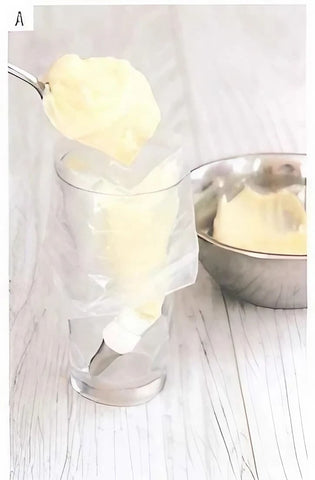
- Attach a piping tip to the end of the piping bag, or simply cut off the end. Add the same batch of buttercream (A) to the piping bag and then apply even pressure around the cake to make the buttercream adhere closely to the cake (B).
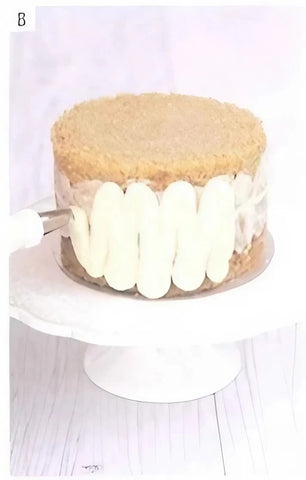
- Use a palette knife to evenly spread the buttercream (C).
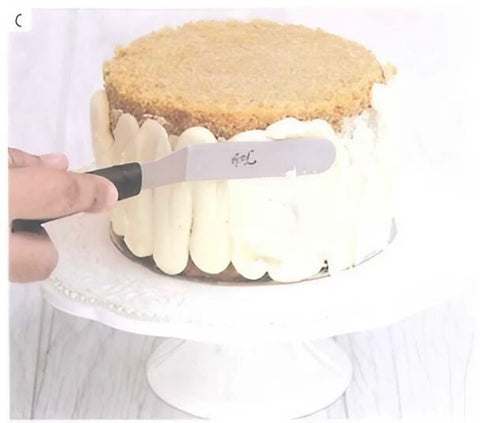
- Next, use a cake scraper to level the layer of buttercream, removing any excess (D).
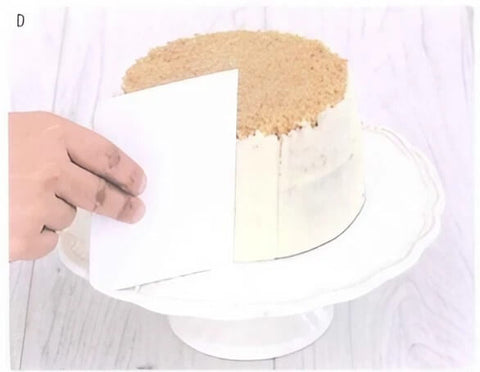
After applying one layer of buttercream, chill the cake for a while, and then apply another layer to create a smooth surface. The thickness of this layer can vary depending on your preference. Achieving a perfectly smooth surface requires patience and accumulated experience. Trust me, no one can achieve a flawless finish on their first attempt, but with enough practice, it will become easier.
A palette knife is the most commonly used tool for smoothing the cake's surface. You don't need any fancy equipment – a palette knife will do the job. Just use the palette knife to spread the buttercream over all sides of the cake. However, it can be challenging to achieve a completely smooth finish, and some lines and bumps may remain.
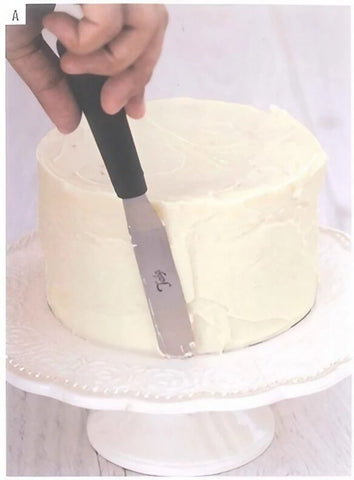
You can use any type of palette knife, whether straight or offset, and the appropriate blade size depends on the cake's size. In most cases, we find that using an offset palette knife works best. Basically, the direction of smoothing doesn't affect the surface's smoothness, but make sure to remove excess buttercream to create a flat surface (A).
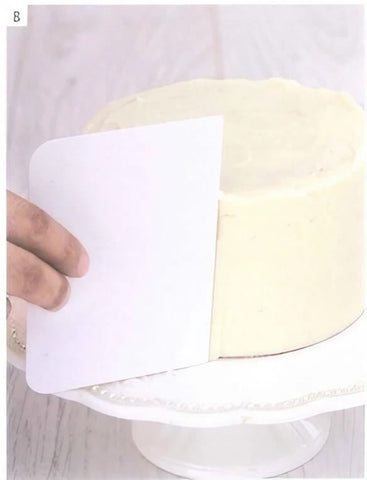
Before use, check that the cake scraper's edge is completely flat, as the texture of the buttercream is quite soft, and any indentations on the scraper will leave marks on the cake. Thus, using a perfectly flat-edged scraper helps you achieve a smooth surface more quickly. Place the cake on a turntable and hold the scraper straight and perpendicular to the turntable base, then move the scraper along the sides until the surface becomes smooth (B). If your cake is tall, you might need a longer tool, such as a long ruler, a larger cake turner (which we find to be the most useful tool), an L-shaped ruler, or a right-angle triangle ruler.
